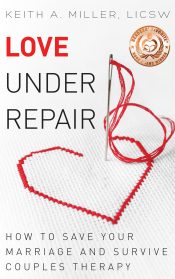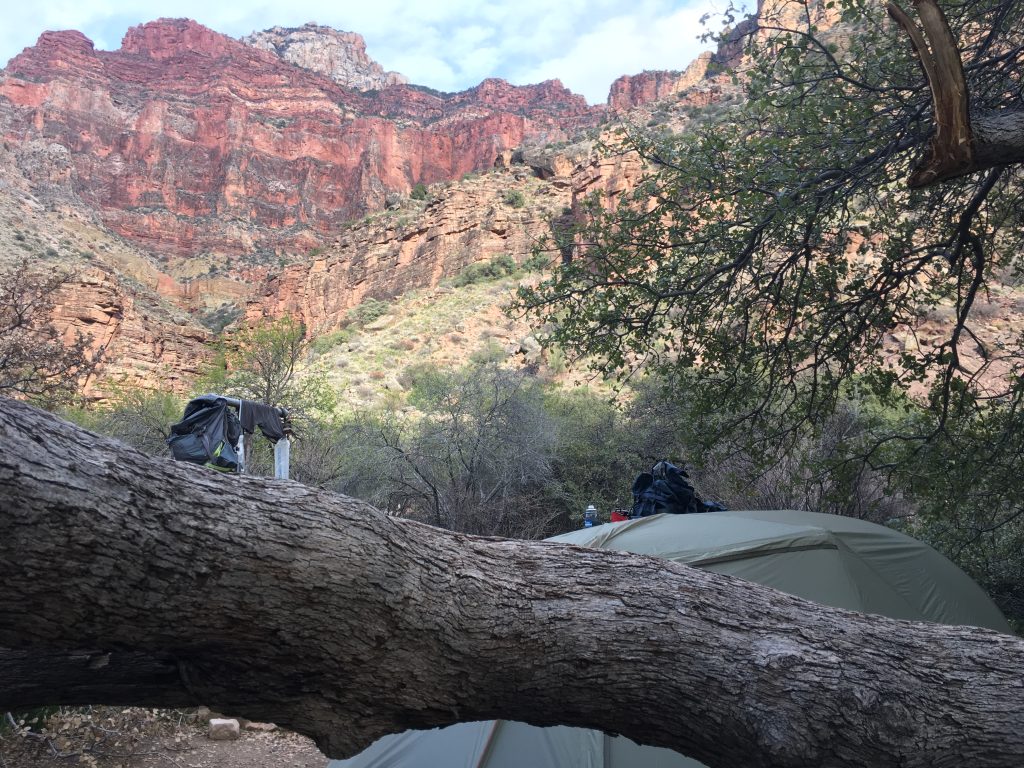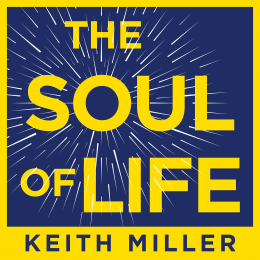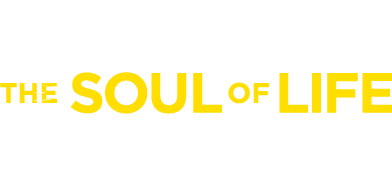My founding story.
"Who can take away suffering without entering it? "
- Henri Nouwen, The Wounded Healer
Forgetting Myself
I remember not remembering, clearly. The clerk at the sandwich shop we were ordering from asked me what I wanted on my sub. I started to tell her. Lettuce, onions, tomatoes, and then I stopped dead—frozen—staring at the item I wanted on my six-inch cold-cut. I knew these things in front of me were green peppers, and I knew I wanted them, but I couldn’t say the words “green peppers.”

Four seconds go by. Five…six…seven. My mind is blank but not so empty that I don’t realize I’m having that glitch again in my head again. I was teetering at the point where I could still simply appear indecisive. This is not a big problem.
Pointing my finger at the green peppers was an obvious move. It worked. The clerk got what she needed to know, and whatever spasm in my brain that was blocking access to simple words I’ve said a thousand times relaxed.
Ah, problem solved.

I was in the clear—for the moment—and having regained my ability to name an everyday object and quickly speak it brought a rush of relief that washed over me like an ocean wave hitting the sand, filling any voids, erasing any sign of them.
Or so it seemed.
Hiding the Baby
In my nearly twenty years of practicing as a psychotherapist I have successfully helped people recognize and work though very serious forms of depression, among them, postpartum depression (PPD). PPD is a unique and sometimes very dangerous condition in which the mother rejects her child and has a strong desire to abandon all the typical mothering behaviors.
Thankfully, PPD is usually very hard to hide (since babies are kind of really hard hide) and can be one of the most successfully treated kinds of depression as a result.
I share this because I want you to know that my mind is tuned to have a pretty keen ability to sniff out depression in someone—in all its common and uncommon shapes and sizes—and skillfully steer them toward the path of recovery. I also share this because I didn’t expect that my mind would also know exactly how to mask a form of depression in myself.
A very powerful part of my mind was hiding the baby.
Abandoned Ship
A little more about my professional world.
My background in psychotherapy is informed by being trained many years ago as a licensed clinical social worker. I own and direct private practice clinics that serve adults, with offices in DC, and Bethesda, Maryland. Our team specializes in psychological trauma, marriage and relationships, depression, anxiety, and substance abuse, and a myriad of other symptoms—often expressed as life obstacles or health problems.
It was overwhelmingly painful to try to summon my interest, even for ten minutes, to focus on this project, a well-designed space ship abandoned by the crew on the launch pad.

From the very beginning of my career, I built my reputation as a clinician—and the success of my practice—by becoming a relationship specialist. There’s a high demand for marriage counseling but a huge under-supply of highly trained relationship counselors. As my success increased, so did my fees. In 2015 I wrote a book called Love Under Repair which led to more success, and even higher fees. I realized my talent in the business of private practice and hired more and more clinicians as associates.
In 2017 I wrote, produced and launched a multi-media, online course for couples called Mindful Marriage. This publishing project took five times the effort, time, and money to produce than my first book and many of my colleagues have told me they believe it’s a powerful tool that can really help others.So what did I do after publishing it?
Nothing.
I went through the motions of making it available in the world, but shared it with practically no one. It was overwhelmingly painful to try to summon my interest, even for ten minutes, to focus on this project—a well-designed space ship abandoned by the crew on the launch pad.
Numb With Work
I never really noticed any problem with turning away from my project after I’d spent so much time bringing it to life. After all, I had a busy practice to run and no shortage of challenges to keep me busy.
If someone asked about my writing I’d say “that’s on the back burner for a while.” But inside, the truth was a bit different. A bit darker. The truth was that a part of me had died. But life was moving on. I had “real” work to do with my existing responsibilities to my business. This was a reliable escape from the discomfort I felt—a steady motion of work—like a kid that lets his body get buried under soft layers of sand at the beach and doesn’t notice the crushing weight until the next breath is impossible.

Brain Fog
It all happened so gradually that it was hard to tell I had a real problem. I didn’t just wake up one day and lose my ability to speak common everyday words. The gradual drop in my mental sharpness was, at first, so easy to work around that I’d simply shrug and chock it up to middle age.
But after a few months of checking in with my doctors for all the obvious culprits, I was dreading every day because of a strange “brain fog” that crept into my awareness. It felt like I was fully awake—no physical tiredness or lack of fitness—but I was mentally not there. I described to my doctor how the fog made my mental activity feel like the contents of a bag that was tossed into a swimming pool; nothing was really lost but it was all spread out and hard to pull together.
To fight the fog, I doubled-down on fitness, and tripled-up on caffeine. Caring for my clients—which I still managed to do well enough—took so much effort that I dreaded every day. My mind seemed to be getting father and farther away from me but all I could do was dose it with more caffeine, as if my problem was not being awake enough. It either had no effect on me whatsoever, or just made the brain fog worse.
Carousel of doctors, part I
My first spin on the merry-go-round of doctors would be with nephrologists (kidney doctors), since I’ve used medicine to treat mild hypertension for years.
I brought them studies from NIH pointing to scant evidence of brain fog as a side effect. They patiently listened to me try to explain the molecular structure of Lisinopril and its action in the brain, and they diligently switched up my meds to test my hypothesis several times.
Eventually it was clear that my hypothesis was a dead end. But the brain fog was worse and now I had an odd sensation in my lips, as if they were swollen. I had to find a doctor that had heard of these symptoms.
I went to a rheumatologist and a cardiologist. Lots of tests, a lot of blood draws, but no clarity.
I didn’t have lupus, or Lyme’s disease. Negative for anything in the polymyalgia family of autoimmune diseases. No lurking syphilis or HIV (I knew this, but these are really common culprits for cognitive/neurological symptoms), and no thyroid or hormone issues. The cardiologist said my heart was “unremarkable.”
I found myself saying to my wife things like, “I don’t want to have a drink tonight but I guess I have to.” Write this down. If you ever say shit like that, it is time to turn yourself in.
- Keith Miller, Host of The Soul of Life Podcast Tweet
Thanks doc.
Every physician I spoke to said I was fortunate to get these results and I agreed. I was athletically fit and healthy by all measures. But my daily functioning was steadily getting worse.

Weak Sauce
Drinking alcohol daily is something that—in my core—doesn’t feel right. I drink socially but kind of hate the idea of alcohol in my diet, writ large. One or three drinks per week, sometimes none. But now I found myself saying to my wife things like, “I don’t want to have a drink tonight but I guess I have to.”
Write this down. If you ever say shit like that, it is time to turn yourself in.
The liquor cabinet in our house suddenly occupied an order of magnitude more real estate in my mind. It was like the long-lost brother to my brain fog—once paired up they began to feel inseparable.
Fortunately, I am blessed with either the right genes or the fear in my soul of losing control, and I was able to speak to my wife about it and lay off the sauce. But I can assure you that never in my life was alcohol so hard to resist.
Carousel of doctors, part II
Next stop on the carousel was a neurologist. I obviously avoided this one for a while. I found myself in his lab several times over the course of a month for a battery of cognitive tests, blood tests, brain scans, balance tests, and poking with an electrified prod to see if I felt anything.
If you only remember one thing from my story, please remember this part about the electrical prod. Just go and see a psychiatrist for God’s sake. Please let what unfolded for me in this dungeon of science be a lesson:
(Note: The technician was an absolute doppelgänger for Bob Ross.)
TECHNICIAN: [in a happy whisper] I’m going to put this electrode on 16 different places on your body, one at a time, and pass current to it from the main lead on your toe.
ME: Current? Like electrical current?
TECHNICIAN: Yes.
ME: Through my body?
TECHNICIAN: Yes.
ME: [Silence]
TECHNICAN: But if you have large fiber nerve damage you probably won’t feel anything.
After the fifth consecutive jolt from Bob Ross—sweat was beading down my forehead. I prayed for large fiber nerve damage. At least temporarily.
Near the end of my weeks of visits with the neurologist, I got results.
Great news! All completely normal. No multiple sclerosis, no brain tumors, no Bell’s Palsy or any other palsy, no pre-diabetes, and no obvious vitamin deficiency (remember that one). And no freaking large fiber neuropathy.
But then there was one last test to perform. I removed my socks and the doctor banged a tuning fork on the desk and pressed its shaft to his finger and pressed his finger under my feet so the vibrations would pass through his finger to my skin. He said, “Tell me when you start to feel the vibrations go away.” After a short time, I said, “Right there. It’s gone now.”
The doctor pursed his lips together briefly and repeated the test. Again, after a short time, I told him when the vibrations where gone.
Still holding the tuning fork to my toe, he paused a moment, tilting his head slightly.
“Now I’ll tell you when the vibration is actually gone,” he said finally.
In the long silence that followed, my eyes met his and it took me a moment, brain fog and all, to fully register the shock of what this simple test was revealing.
More than fifteen very long seconds later he murmured, “Now, they’re gone.”
In that moment I had no words.
He proceeded methodically with a slightly different, more dramatic, test.
He took a sharp pin and, touching parts of my underfoot with various pressures, asked me to tell him when I felt sensation.
“Ok? Let’s begin.”
He let me visually watch him drag the pin from my big toe to the heel of my foot and up the back of my calf. I felt no sensation until the pin was halfway up my calf. Same on the other leg. Ditto on both of my hands and part of my forearms.
“Holy shit!” I exclaimed. “What’s going on?”
Feeling Numb Inside and Out
Small fiber peripheral neuropathy is a fairly common disease in which there is damage to the nerves throughout the body (mainly the periphery of the body which is arms, legs, hands and feet) that control the sense of touch or pain. Unlike large fiber nerve damage that affects muscle control or coordination, small fiber neuropathy is basically invisible to an outside observer. It happens to be pretty invisible to the people that have it sometimes, too.


Losing My Senses
There are no treatments for peripheral neuropathy, other than finding the root causes (like for example, diabetes) and curing that. Most peripheral nerve damage can recover when the underlying cause is treated, but not always. Depending on the severity of the loss of blood flow to the nerves (as in the rare but serious Raynaud’s Syndrome which causes toes and fingers to suffer actual frostbite from the slightest exposure to cold), most people just learn to live with “losing their senses.”
Other than ordering a sleep study (all normal) and putting a worm in my ear about “certain vitamin imbalances that don’t show up on tests,” my neurologist could offer no other help.
Trust me, I tried to convince him otherwise.

The pernicious anemia society: Could it be B12?
Being told by a highly trained specialist that I have a disease for which there is no cure, is—at least to me—is unsettling. Turning to Dr. Google for the comfort I knew I would not receive there, I soon found myself going down a rabbit hole within a rabbit hole called “Vitamin B12 deficiency.” I’ll save you from narrating every twist and turn of this rather fascinating and tantalizingly helpful/not-helpful medical subculture centered in the U.K. around an organization called the Pernicious Anemia Society.
The oncologist who told me off (and told me the truth)
Prior to the endoscopy, I was convinced by the literature I read about B12 that I had this vitamin deficiency, and that this was the cause of my brain fog, low energy, and other weird neurological symptoms. I could barely function cognitively on some days but I swore in my bones that my mental health was fine. It was my physical health that needed treatment.
Desperate to find proof for the preconceived answer I had in my head, I met with a hematologist/oncologist—a blood pathology specialist named Dr. Frederick Min, who’s work and research lies within the demanding field of cancer treatment. (Note: I interviewed Dr. Min for my first episode of The Soul of Life podcast.) I thought for sure that he would find the rare disorder that my neurologist couldn’t. Even if it was an early sign of cancer, I’m the kind of person that wants to know and face it head on. Besides, each day that dragged on without some relief was beginning to feel impossible to bear.

Dr. Min found absolutely no signs of cancer, or any other possible causes of my symptoms. But he offered me a ray of hope.
“It’s practically impossible to take too much vitamin B12,” he said. There was no evidence I had pernicious anemia, but I was convinced the tests were false negative and begged him to let me get regular B12 injections.
Once I started getting them, I swore that my symptoms were remitting.
For the next three months I’d show up regularly in Dr. Minn’s oncology infusion center—the place where people stay all day for their chemo treatment—to get my B12 shots. More than once I felt a chill of guilt and privilege as I sat next to a patient on a chemo rig, got my quick injection, and left. Something didn’t feel right about what I was doing.
When Dr. Minn flatly told me it was impossible that the B12 shots were doing any good—he said it was the placebo effect I was feeling—I found another doctor to let me self-inject. I was so desperate to find B12 and follow the Pernicious Anemia Society’s advice that patients be given B12 based on symptoms, not blood tests, which they claim are not accurate enough.
All at once I felt like a crusader for my own health while somehow also feeling like a junkie, pining for relief as I jabbed a needle into my stomach each day.
Two months later, the day came for me to meet Dr. Min and get one more blood test—one that I insisted he do again. But there would be no phlebotomist for me this time. No more B12 injections either.
Normally the warmest, most conversational of any doctor I had visited, Dr. Min saw me in the hallway and furrowed his brow.
“You, again?”
Take care of what is going on inside of you
Dr. Min dismissed his omnipresent physician’s assistant, shut the lid to his laptop, and ushered me into his office. My heart sank.
He proceeded to repeat a story he told me when I first visited him three months prior. I was incapable of hearing it at the time.
It was his own personal story. During his medical school residency, he began having memory problems and was dragging himself to work. He hid his dread of work and emotional numbness for a long time because he’s driven to succeed.
One day, a psychiatry colleague asked him to join her for drinks. She wasn’t there to socialize. She said she could see something in him and was concerned. He told her he was just “tired” and “burned out,” but he confessed to the troubling memory problems and his insomnia. Like a laser beam, she explained the biological and physical nature of depression. It has nothing to do with being weak or not wanting to work hard. Nearly every person will experience depression at some point in their life, and it is easily treatable, especially when intervention is at mild or moderate stages.
He trusted her, medically treated the depression, and made important behavioral changes.
She was right. The Zoloft made a huge, physical, difference for him and he took better care of his mental and physical health.
Dr. Min looked me directly in the eyes. “Keith, you can’t come back here again.
Look around here. Look at the people I’m treating here. Many of these people will not make it. You are very healthy. You are successful. You push yourself in your work and athletically. I see this all the time,” he said.
“You’ve got to take care of what is going on inside of you.”
The ultimate social distance: Rim-to-rim-to-rim, during COVID
Before I could swallow—literally and mentally—the medicine I needed to feel better, Covid started spreading in the U.S.
When our state of Maryland declared a state of emergency in March, my 14-year-old son and I were three weeks away from trekking 44 miles across the Grand Canyon and back (rim-to-rim-to-rim). That’s a very challenging, monster hike (for us at least). It was a trip we had planned for two years and had put a lot of time into training and gearing up. I predicted that if we waited until Spring break to fly to Arizona we’d be locked out of the national parks. On the other hand, if we left immediately and got into the backcountry now, the whole country could get locked down but we’d be locked inside what I thought was best place in the world in which to be trapped. At the time, I thought it was an ideal time to get ourselves to the middle of nowhere.

I talked about it with my wife of 20 years and debated the pros and cons. Two days later, my son and I were on a surreal Southwest flight (just us +crew and 8 other passengers), headed for what would turn out to be a magical and once-in-a-lifetime-during-covid trip. (Listen to my conversation with legendary canyoneer and award-winning Time/Life adventure photographer John Annerino.)
On day five of our hike, we emerged to civilization back on the South Rim to find shocking acceleration of the COVID crisis. We scrambled to find a hotel that was open in Flagstaff before getting back to Maryland on the earliest flight possible.
Somewhere in the beauty and solitude and joy and love shared with my son as we pushed our bodies to our limits, I experienced a sweet taste of being.
Taking medication to help my mind let me live more in my “being” no longer felt like I was giving in. It just felt like coming home. It immediately made sense to all of me and, like one of our plunges into the invigorating snow-melt waters of the Bright Angel creek on the North Kaibab trail, I embraced medicine’s power and jumped in.
The Soul of Life
This brings me to why I’m starting a podcast called The Soul of Life. The short answer is this: I think there may be others like me.
Here’s the longer answer, or what I like to call my big purpose:
I’m bringing together medical and mental health professionals, helpers, healers, scientists, athletes, and entrepreneurs who want to find deeper meaning and joy to energize their work, come home to their deeper selves and learn healing from the inside-out so that we can adapt to rapidly changing needs, innovate, and achieve powerful results where the world needs us most.
The Soul of Life brings together people who are ready to get off the treadmill of doing their life and want to start living life from their being—from their soul.
Together, we’ll learn how to better care for the soul-sacrificed parts of us that carry the mantle of our self-worth, recognition, success, and financial security. On this journey we will:
• Remember who we are
• Restore our hearts, minds, and bodies
• Learn to operate from a new dimension of power in our life and in our relationships

I started The Soul of Life podcast to bring together people from a wide spectrum of disciplines so that we can gather the wisdom they embody at the edges of their abilities. Where uncertainty is high, possibilities are almost endless. Together, we’ll open ourselves up to explore what I like to call the full quantum potential of the human mind which is capable of far more than we often imagine. Even tangential brushes with this almost-impossible-to-quantify horizon in give birth to life-changing moments.
